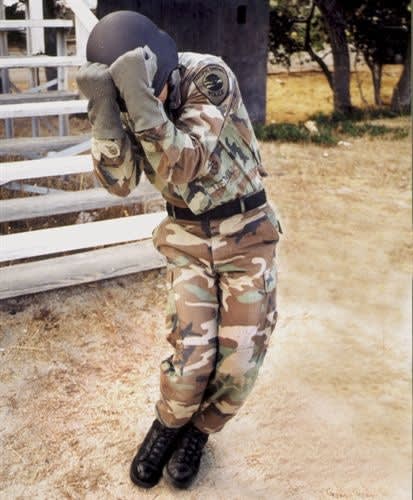Under normal circumstances, when a person jumps to the ground from a short distance he looks straight down and spreads his feet shoulder-width apart for stability. He plans to land on his feet by flexing his knees at the last possible moment.
In altitude jumping, this "natural" method is all wrong. Instead of crashing like a crushed aluminum can and absorbing all the impact immediately, the PLF allows the jumper to land like a tipping bowling pin, using his feet, legs, hips, torso, arms, and fists to absorb the impact more slowly. Remember the image: a tipping bowling pin that begins to rotate over its top.
Before giving specific instructions for executing the PLF, let's cover the most important rule in altitude jumping: Keep your feet and knees together at all costs. The two "twigs" you walk on, kept tightly together and slightly bent, can tolerate quite a lot of abuse. Apart, they'll snap, leaving you susceptible to serious injury and vulnerable to attack. Even under the worst circumstances where the PLF can be little more than a controlled crash, keeping your feet and knees together will get you through.
To execute the PLF, follow these steps. Practice slowly at first, allowing your body to become accustomed to the movements.
Step One












